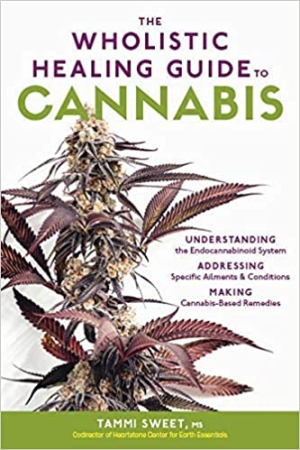The Wholistic Healing Guide to Cannabis
Cannabis has miraculous powers, too many to list, but perhaps most extraordinary is its ability to communicate. With Tammi Sweet’s help as an empath, we’re pleased to report a few important facts that cannabis would like you to know, shared in The Wholistic Healing Guide to Cannabis.
First of all, cannabis feels personally violated when her various parts are isolated and extracted into potent chemicals. She (the female plants are used medicinally, not the male) is far more than the sum of her parts. By using her entire flower and trichome-filled leaves, we take full advantage of her phytochemicals, all working together to create an entourage effect.
As an herbalist, Sweet refuses to work with standardized extracts. She says, “Isolated extracts may tame cannabis and make her more ‘manageable’ and knowable, but in a false sense.” Yes, you gain control, but in an attempt to create a one-size-fits-all standard dose, you are left with just a “whisper of what the plant’s capable of.” In fact, whole plant extracts are from 4 to 330 times more effective than isolated extracts. Sweet’s and cannabis’s main point is that a holistic approach to healing includes looking at the patient, the condition, the dosage, the cultivar, and the grow environment.
Sweet has a master’s degree in endocrinology. She developed her intuitive approach through thirty years of teaching and healing. The Wholistic Healing Guide to Cannabis offers a much-needed integrated resource on the benefits of cannabis, the human endocannabinoid system, and in-depth instructions for making remedies at home for conditions like stress, chronic pain, PTSD, insomnia, and cancer.
Reviewed by
Matt Sutherland
Disclosure: This article is not an endorsement, but a review. The publisher of this book provided free copies of the book to have their book reviewed by a professional reviewer. No fee was paid by the publisher for this review. Foreword Reviews only recommends books that we love. Foreword Magazine, Inc. is disclosing this in accordance with the Federal Trade Commission’s 16 CFR, Part 255.

